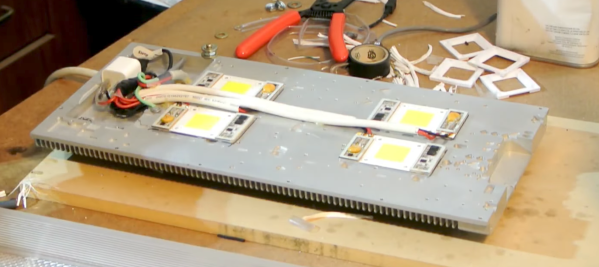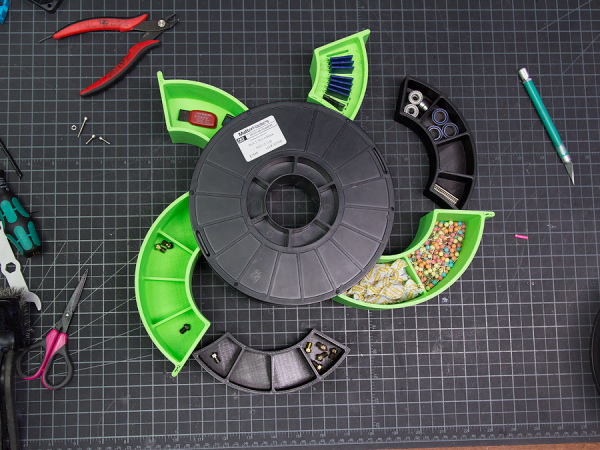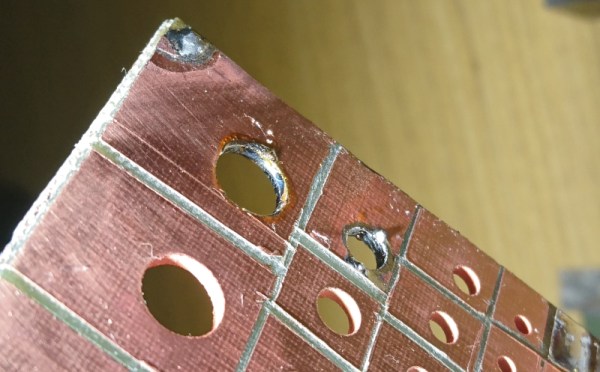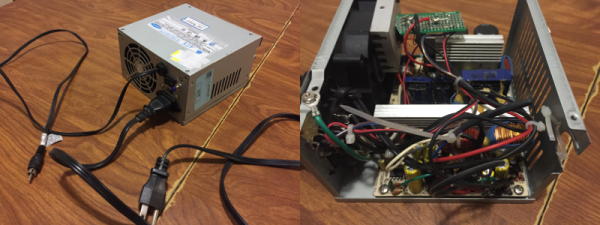When the apocalypse comes, we want [Justin] on our team! He made a hefty 400 W work light out of four 100 W LEDs mounted to a giant, aluminum slab-like heat sink he had lying around. He manufactured a diffuser for the LEDs by cutting down what appeared to be a old broken fluorescent light fixture’s cover, with side plates bolted into place for good measure. [Justin] does a lot of metalwork in his projects, and you can see it the precision with which he bolts the various parts together into a rather slick assembly.
The LEDs run off 110 V, and [Justin] soldered one of those white iPhone USB chargers in to power four small fans that are mounted on the heat sink fins backing up the LEDs. Then he mounted a ball joint onto the underside so the thing could be pointed wherever, with the other end of the joint attached to what might be the tripod from a standing work light.
Now all he needs is a control system, like this arcade button workshop light or this fully controllable workshop lighting rig.
Continue reading “Building A Monster Floodlight Out Of Scrap”






















